The quad is one of the most useful machines on farm and it often can go long periods without getting the attention it may need. With winter in full swing, most farm quads are not being used as regularly. So now is the ideal time to give it that well needed once-over.
Here we will set out some practical advice around the more important maintenance and preventative procedures. It is essential the user manual is consulted or advice from your local dealer is sought around fluid levels and service intervals of different components. If you feel unsure or incapable of carrying out these procedures, it is worthwhile having them carried out by a local dealer.
Here we look at the 500cc Honda Foreman TRX500. Service intervals mentioned will be to suit this model. Other brands and models may vary. However, it is a good indicative guide.
Engine
Recommended service intervals need to be adhered to for a long working life. Engine oil and filter needs to be replaced every 100 hours or 1,000km. The best way to go about this is to have the engine warmed up as oil becomes lighter and drains better when warm.
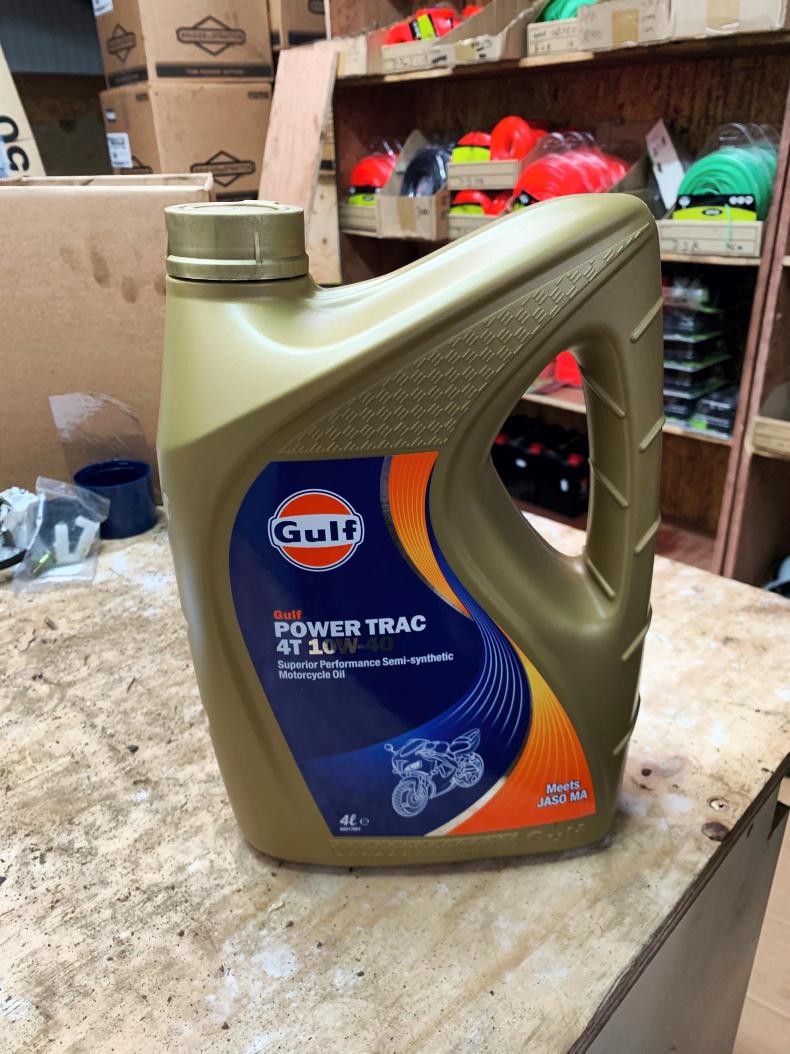
The engine oil used in the Honda Foreman is 10W-40.

Oil level should be regularly checked.
Once oil has drained, replace the oil filter and seal. The new seal should be lightly rubbed with oil beforehand to ensure a good seal of the filter’s housing. The aluminium plug/bung on the bottom of the sump should be tightened back into place once all oil has drained. Take extra care not to overtighten this bung, as its aluminium threads can be easily damaged.

Oil filter housing bolts should be handled with care as they be easily damaged.

The oil filter and seal should be replaced every 100 hours.
The engine should then be filled to the recommended level with new engine oil, 10W-40 for this model. Once the service is complete, the quad should be run for a number of minutes and its oil level checked again when cool. The air filter should be either cleaned or replaced at every service as good air flow is essential for optimum engine performance.

Worn out spark plugs can have a number of symptoms.
The spark plug should be checked and replaced if necessary. Symptoms of worn plugs include engine misfire, increased fuel usage, hard starting or a lack in power.
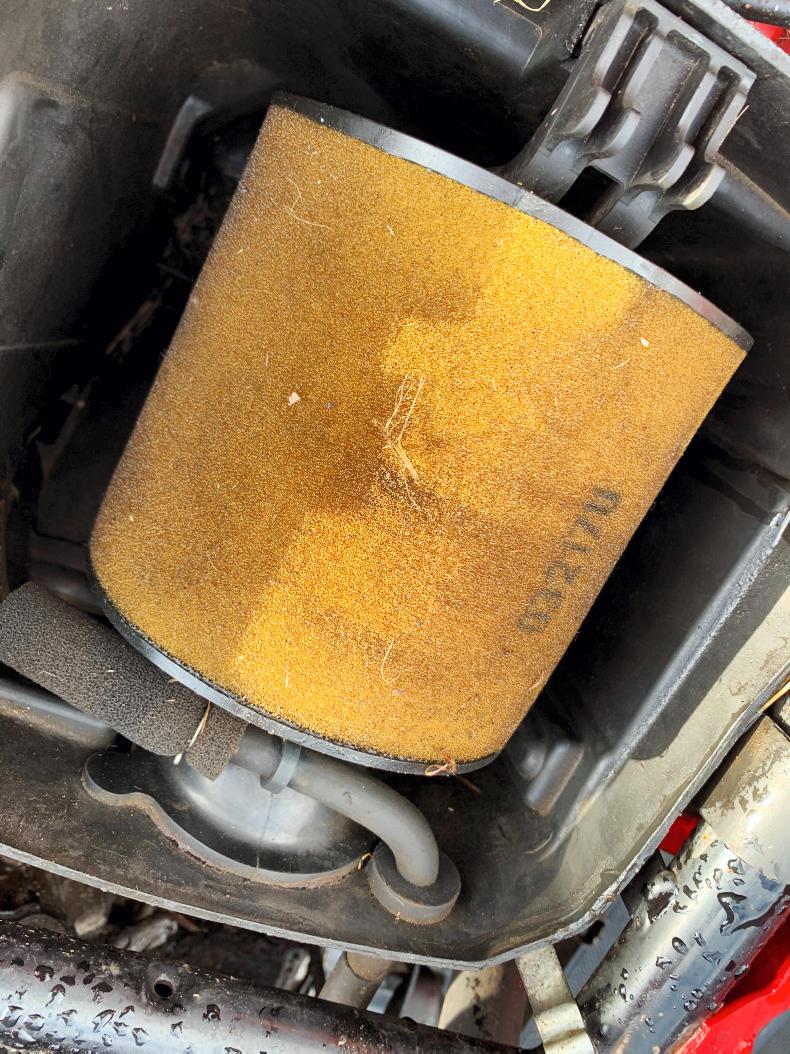
The air filter should be either cleaned or replaced at every service.

Differential oil should be checked at every service and replaced if milky or black in colour.
Transmission and suspension
Front and rear differential oil levels should also be checked every 100 hours. If oil is milky or black it needs to be replaced. Normally front differential oil will be in better condition than the rear, depending on how much time the quad spends in 4WD. Each differential has a fill and drain bung. Oil should be up to the level of the fill bung on the front differential, but not the back. The rear differential has a separate check bolt (lower down than the fill bung) which should be opened to check the oil level.

Ball joints and track rod ends should be inspected for movement and replaced if necessary.
The condition of both front and rear shocks should be checked, along with wishbones, track rod ends and ball joints. Rubber CV boots should be checked for damage and replaced if necessary. Steering linkage components wear, which leads to play in the steering and may eventually result in steering failure if not replaced in time.
Wheel bearings also need to be checked. A good way to check for play or wear in these components is to jack the front wheels off the ground and physically rock each wheel with two hands. Often it may be easier to get a local dealer to carry out this kind of repair as they are fully equipped and trained to do so.
Brakes and tyres
Most farm quads are fitted with hydraulic brakes up front and cable drum brakes on the rear. Both systems are different and require different service treatment. It is a good idea to remove the front wheels and examine brake pad and disc condition. Worn discs and pads should also be replaced as good functioning brakes are essential.
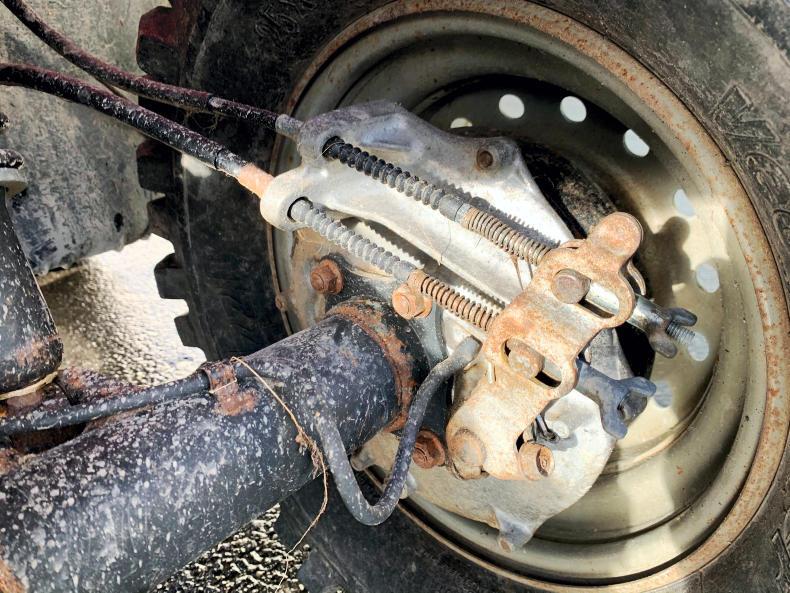
Rear brake cables should be free moving and adjusted accordingly to wear.
Wear on brakes depends on the user and how much he/she use the brakes. Sometimes the footbrake can seize from lack of use. Fixing this involves freeing out the cable or replacing the complete brake cable. Rear brakes can be adjusted using the two rear hub-mounted thumbscrews, one for the handbrake and the other for the foot brake. As brake shoes wear, these will need slight adjusting.
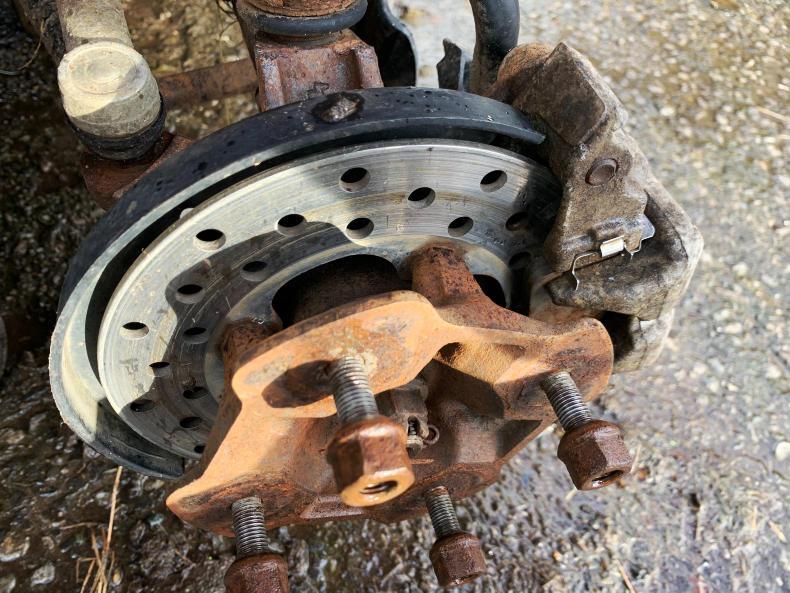
Front brakes and hub condition should be examined.
Handlebar grips should be replaced if worn. These are generally very cheap and easily replaced. Tyre condition should be assessed and worn or damaged tyres replaced. Correct tyre pressure is essential. Varying pressure can hugely change the quad’s handling.

Tyre condition and pressure should be regularly checked.

Worn tyres are dangerous and should be replaced.
General appearance
As with any machine, it is essential to maintain your quad’s body panels and overall physical condition. These areas include side steps, engine side covers and mudguards. These panels are often held together with plastic clips that may break or come loose and fall out over time.
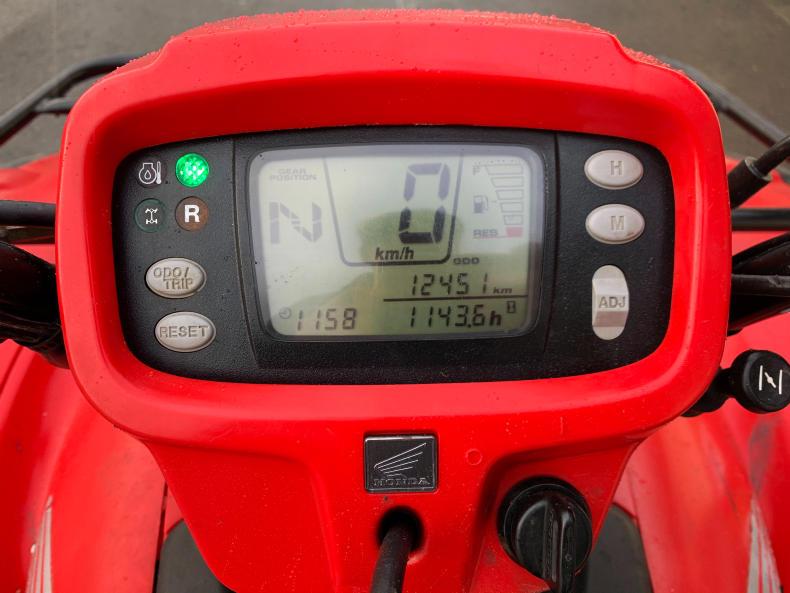
The display should be in good working order.
Replacement clips are only a few euros and are worth replacing to keep panels secure, if left unattended, repair may end up more costly. Good practice is to ensure all functions and buttons are working and that all lights including brake lights are functioning.

At first glance the quad should be safe looking with all body panels in good order.

Footwells and body panels should be kept in good condition and repaired if broken.
Washing and lubricating your quad regularly helps maintain it aesthetically and mechanically, leaving you with an overall better machine when you want to trade. Older machines especially should be well maintained as spare parts are becoming hard to source and discontinued in some cases.

The battery and its terminals should be clean and free from debris.
The quad is one of the most useful machines on farm and it often can go long periods without getting the attention it may need. With winter in full swing, most farm quads are not being used as regularly. So now is the ideal time to give it that well needed once-over.
Here we will set out some practical advice around the more important maintenance and preventative procedures. It is essential the user manual is consulted or advice from your local dealer is sought around fluid levels and service intervals of different components. If you feel unsure or incapable of carrying out these procedures, it is worthwhile having them carried out by a local dealer.
Here we look at the 500cc Honda Foreman TRX500. Service intervals mentioned will be to suit this model. Other brands and models may vary. However, it is a good indicative guide.
Engine
Recommended service intervals need to be adhered to for a long working life. Engine oil and filter needs to be replaced every 100 hours or 1,000km. The best way to go about this is to have the engine warmed up as oil becomes lighter and drains better when warm.

The engine oil used in the Honda Foreman is 10W-40.

Oil level should be regularly checked.
Once oil has drained, replace the oil filter and seal. The new seal should be lightly rubbed with oil beforehand to ensure a good seal of the filter’s housing. The aluminium plug/bung on the bottom of the sump should be tightened back into place once all oil has drained. Take extra care not to overtighten this bung, as its aluminium threads can be easily damaged.

Oil filter housing bolts should be handled with care as they be easily damaged.

The oil filter and seal should be replaced every 100 hours.
The engine should then be filled to the recommended level with new engine oil, 10W-40 for this model. Once the service is complete, the quad should be run for a number of minutes and its oil level checked again when cool. The air filter should be either cleaned or replaced at every service as good air flow is essential for optimum engine performance.

Worn out spark plugs can have a number of symptoms.
The spark plug should be checked and replaced if necessary. Symptoms of worn plugs include engine misfire, increased fuel usage, hard starting or a lack in power.

The air filter should be either cleaned or replaced at every service.

Differential oil should be checked at every service and replaced if milky or black in colour.
Transmission and suspension
Front and rear differential oil levels should also be checked every 100 hours. If oil is milky or black it needs to be replaced. Normally front differential oil will be in better condition than the rear, depending on how much time the quad spends in 4WD. Each differential has a fill and drain bung. Oil should be up to the level of the fill bung on the front differential, but not the back. The rear differential has a separate check bolt (lower down than the fill bung) which should be opened to check the oil level.

Ball joints and track rod ends should be inspected for movement and replaced if necessary.
The condition of both front and rear shocks should be checked, along with wishbones, track rod ends and ball joints. Rubber CV boots should be checked for damage and replaced if necessary. Steering linkage components wear, which leads to play in the steering and may eventually result in steering failure if not replaced in time.
Wheel bearings also need to be checked. A good way to check for play or wear in these components is to jack the front wheels off the ground and physically rock each wheel with two hands. Often it may be easier to get a local dealer to carry out this kind of repair as they are fully equipped and trained to do so.
Brakes and tyres
Most farm quads are fitted with hydraulic brakes up front and cable drum brakes on the rear. Both systems are different and require different service treatment. It is a good idea to remove the front wheels and examine brake pad and disc condition. Worn discs and pads should also be replaced as good functioning brakes are essential.

Rear brake cables should be free moving and adjusted accordingly to wear.
Wear on brakes depends on the user and how much he/she use the brakes. Sometimes the footbrake can seize from lack of use. Fixing this involves freeing out the cable or replacing the complete brake cable. Rear brakes can be adjusted using the two rear hub-mounted thumbscrews, one for the handbrake and the other for the foot brake. As brake shoes wear, these will need slight adjusting.

Front brakes and hub condition should be examined.
Handlebar grips should be replaced if worn. These are generally very cheap and easily replaced. Tyre condition should be assessed and worn or damaged tyres replaced. Correct tyre pressure is essential. Varying pressure can hugely change the quad’s handling.

Tyre condition and pressure should be regularly checked.

Worn tyres are dangerous and should be replaced.
General appearance
As with any machine, it is essential to maintain your quad’s body panels and overall physical condition. These areas include side steps, engine side covers and mudguards. These panels are often held together with plastic clips that may break or come loose and fall out over time.

The display should be in good working order.
Replacement clips are only a few euros and are worth replacing to keep panels secure, if left unattended, repair may end up more costly. Good practice is to ensure all functions and buttons are working and that all lights including brake lights are functioning.

At first glance the quad should be safe looking with all body panels in good order.

Footwells and body panels should be kept in good condition and repaired if broken.
Washing and lubricating your quad regularly helps maintain it aesthetically and mechanically, leaving you with an overall better machine when you want to trade. Older machines especially should be well maintained as spare parts are becoming hard to source and discontinued in some cases.

The battery and its terminals should be clean and free from debris.






















 This is a subscriber-only article
This is a subscriber-only article










SHARING OPTIONS: